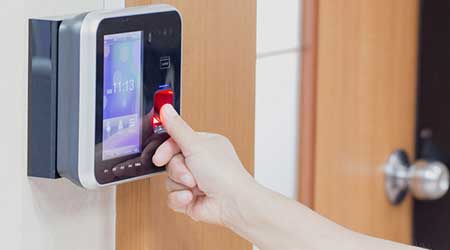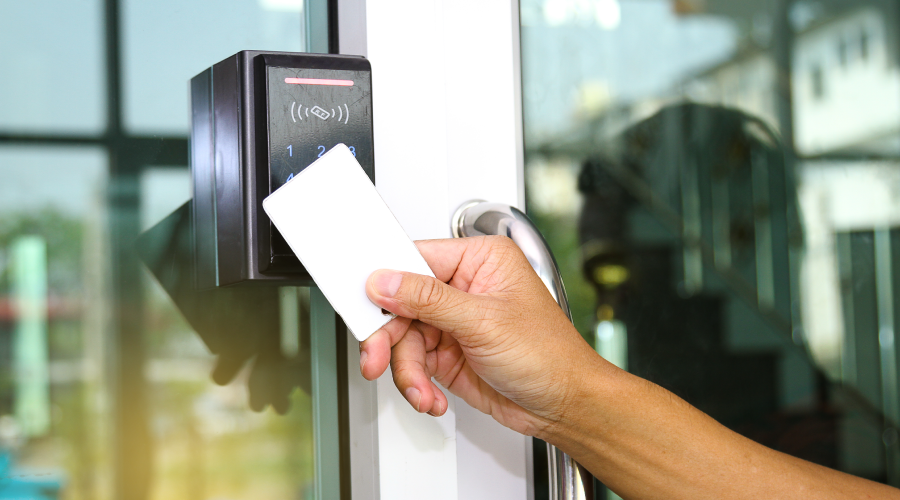Several Factors Contribute to Specification Decisions for Door Hardware
Part 1 of a 4-part article on door hardware and security upgrades
Several factors can help managers in deciding among different types of door hardware, including locks and closers. These factors include the interior or exterior temperature of adjacent areas, the nearby environment — for example, the presence of dust or moisture — and the size and weight of the opening. Dust and moisture can cause major problems for the operation of door hardware if technicians do not maintain components regularly. Hardware and hinges can even become inoperable.
High levels of moisture in the area of the opening, such as near a beach or the exterior of building, can cause the door to corrode rapidly, which, in turn, can cause premature opening failure and lead to problems for replacement or repair budgets.
One strategy for addressing doors in design and construction is to properly specify and validate the paint specifications applied to both interior and exterior doors. The finish on the hardware itself needs to be resistant to exterior high-moisture conditions.
Understanding door functionality is essential in deciding on the hardware to specify for each opening. How many times will the opening be cycled? Door hardware is rated to how many cycles it can endure in a given amount of time. This testing helps determine the longevity of the door and the components.
One of the biggest mistakes managers tend to make involving door installation and operation is the use of lightweight hardware on heavyweight and oversized doors. Larger and heavier doors require stronger, heavier gauge hardware if they are to stand up to extreme or even normal use. Undersized hardware is likely to hinder the performance of door components, resulting in the misalignment of the door, difficulty of operation and the loss of a secure opening.
The latest generation of commercial-quality locks have added features that provide institutional and commercial facilities with heightened security. Locks now are made with heavier-gauge metal, a longer throw on the latch, and additional locking functions that are designed to provide added security. Some locks also feature the ability to be controlled wirelessly for enhanced access control and scheduling.
Most commercial door locks are mortise style that are embedded into the edge of the door. These locks provide added security and are relatively easy to re-key with the aid of a standalone cylinder body. Mortise locks also offer different functions to accommodate the use of each lock — entry, privacy, storeroom, and passage. The usage and security level of the opening will determine the function.
Door closers are needed to control a door’s movement through its entire swing. Wind can affect exterior doors, resulting in damage to the door and its hinges, and it can lead to damage of the building itself. Managers should strongly consider having closers installed on the appropriate doors in exterior settings, corridors, and secure passages.
Closers are a major concern for security and access control. The closer ensures the opening returns to a secure configuration after someone passes through the opening. Operators are also a key component in controlling door movement. Operators are often seen in operating room situations, where personnel avoid placing their hands on the door to avoid contamination. They are also used in situations to help when disabled persons need assistance to open doors.
Michael Hanner is a field engineer with Horizon Engineering Associates — www.horizon-engineering.com — who provides commissioning services in Charlotte, N.C. He has experience with commercial doors and hardware, installing and servicing computerized card access systems, door electronics, hardware and door automation.
Related Topics:















